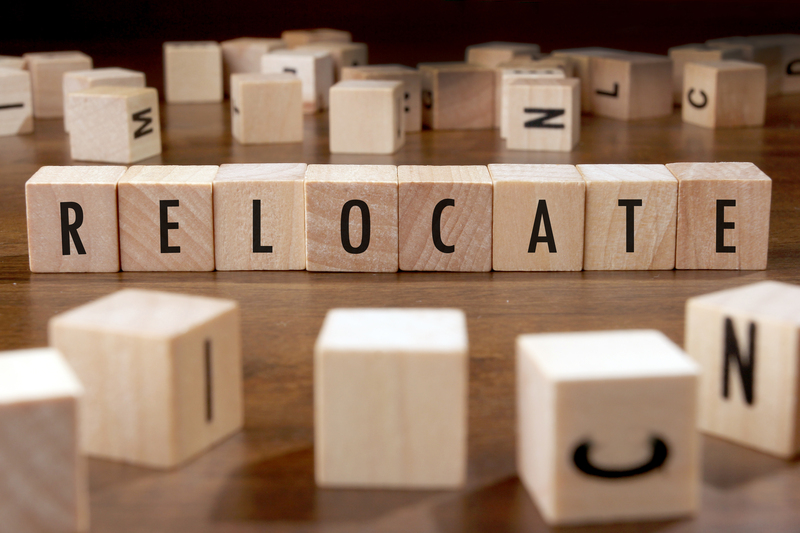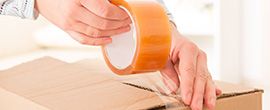Essential Steps for Moving Your Bed and Mattress Safely
Posted on 22/06/2025
Essential Steps for Moving Your Bed and Mattress Safely
Are you planning a big move and feeling overwhelmed about the *safe transportation of your bed and mattress*? Moving these large pieces of furniture may seem daunting, but with the right strategy, you can prevent damage to your belongings--and your back! This comprehensive guide will walk you through all the essential steps for moving your bed and mattress safely. Read on for expert tips, organized checklists, and actionable advice that ensure your move is stress-free and efficient.
Table of Contents
- Preparation: What to Do Before Moving Your Bed and Mattress
- Disassembling the Bed Frame Safely
- Preparing the Mattress for Relocation
- Protecting Your Bed Components
- Lifting, Carrying, and Loading Your Bed and Mattress
- Unloading and Reassembling at Your New Home
- Pro Tips for Moving Beds and Mattresses Safely
- Final Thoughts: Ensuring a Smooth Move
Preparation: What to Do Before Moving Your Bed and Mattress
Preparation is the cornerstone of safe furniture moving, especially when it comes to bulky and often awkwardly shaped items like beds and mattresses. Here are crucial first steps you should take to ensure everything goes smoothly:
- Take Measurements: Measure doorways, stairwells, elevators, and hallways where your bed and mattress will pass through. This avoids last-minute scrambling or, worse, property damage.
- Clear the Path: Remove any obstructions, furniture, or debris that could hinder the movement of your bed and mattress.
- Gather Supplies: Stock up on moving blankets, mattress bags, bubble wrap, packing tape, tools (wrenches, screwdrivers), moving straps, and dollies.
- Ask for Help: Don't move large items alone; enlist friends, family, or even professional movers for safety and efficiency.
Useful Supplies for Moving Beds and Mattresses
- Mattress cover or bag (to protect against dirt, moisture, and tears)
- Moving blankets and furniture pads
- Sturdy rope or moving straps
- Basic tool kit (screwdriver, wrench, pliers)
- Markers and sealable plastic bags (for screws and bolts)
- Dolly or hand truck
Having these essentials ready will greatly facilitate a safe and efficient bed and mattress relocation.
Disassembling the Bed Frame Safely
To move your bed safely, it's important to fully disassemble the bed frame first. This reduces its weight and bulk, helps prevent damage to both the frame and your property, and makes it easier to maneuver through tight spaces.
Step-by-Step Guide to Disassembling Your Bed Frame
- Remove all bedding: Strip sheets, pillowcases, comforters, mattress toppers, and any other accessories. Launder or pack them as needed.
- Take out the mattress and box spring: Carefully slide these off the frame and stand them aside.
- Detach bed slats/support planks: For platform beds or those with slats, carefully lift each piece out and set aside.
- Unscrew the frame: Use a screwdriver or wrench to undo bolts and screws connecting the frame's parts (e.g., rails, headboard, footboard). Keep all fasteners organized in a sealable plastic bag, labeling it for easy reassembly.
- Wrap individual pieces: Use moving blankets or bubble wrap to protect wood, metal, or upholstered pieces from scratches and dents during transit.
Tip: Take photos as you disassemble challenging sections to remember how everything fits back together.
Preparing the Mattress for Relocation
A mattress can be a significant investment and deserves special care during a move. To move your mattress safely, follow these essential steps:
- Clean Your Mattress: Vacuum and wipe down your mattress before moving. A clean mattress is less likely to attract mold or pests during a move.
- Use a Mattress Bag: Always encase your mattress in a plastic cover or specially designed mattress bag. This protects against dirt, dust, and moisture.
- Seal the Edges: Use packing tape to close off any openings in the bag, offering extra protection during the move.
- Label the Bag: Clearly mark the bag with "Top/Bottom" and "Fragile - Do Not Bend" if applicable (especially important for memory foam or pillow-top mattresses).
Can You Fold a Mattress When Moving?
Some foam and latex mattresses can be carefully folded, but most innerspring and hybrid mattresses should never be bent or folded as it may damage their structure. Always refer to the manufacturer's instructions and keep your mattress upright during transportation if possible.
Protecting Your Bed Components
Moving exposes your belongings to the risk of damage. Proper protection ensures your mattress and bed frame arrive unscathed.
- For Mattresses and Box Springs: Use thick plastic mattress covers or moving blankets. Secure these with tape or rope. If traveling in wet or dirty weather, double-bag for extra protection.
- For Bed Frames and Slats: Wrap each component in furniture pads or blankets. Use bubble wrap on delicate areas such as ornate headboards or footboards. Keep all hardware in labeled bags taped to one main piece.
- For Upholstered Beds: Be extra cautious. Wrap exposed corners and arms, and if possible, use shrink wrap in addition to blankets for added protection.
Bonus Tip: If you're moving on a rainy or snowy day, have tarps handy to keep your mattress and bed frame dry during loading and unloading!
Lifting, Carrying, and Loading Your Bed and Mattress
Handling heavy and awkward items like beds and mattresses requires careful planning to avoid injury and property damage. Follow these critical steps for a safe bed and mattress move:
Lifting and Carrying Bed Frames and Mattresses
- Use the Right Technique: Lift with your legs, not your back. Get help for large or heavy pieces--never try to haul a mattress solo if it's too bulky!
- Utilize Moving Equipment: Use a dolly, furniture sliders, or moving straps for heavy bed frames. Mattresses, especially king-size, benefit greatly from mattress slings or carrying harnesses.
- Move Mattresses Upright: Keep the mattress upright on its side to navigate tight corners and prevent it from folding, which could cause permanent damage.
Loading Into the Vehicle
- Plan the Order: Heavier parts (like the bed frame) go in first, against the wall of the truck for stability. Keep the mattress and box spring upright, with padding around them to minimize shifting and damage.
- Secure Everything: Use straps to anchor your mattress and bed parts firmly, preventing them from sliding during transit.
- Weather-Proofing: If you're using an open truck or trailer, ensure the mattress is completely covered and protected from the elements before transit.
Never: Place heavy boxes or items on top of your mattress during the move--it can warp or damage its internal structure.
Unloading and Reassembling at Your New Home
Once you've arrived at your destination, unloading and reassembling your bed and mattress safely is the last step. Here's how to do it right:
- Inspect for Damage: Before unloading, check each piece for any signs of rips, dents, or other damage that might have occurred in transit.
- Move Components to the Right Room: Take the bed frame, slats, hardware, and mattress directly to the bedroom where they will be reassembled.
- Unwrap Carefully: Remove all protective coverings, being careful not to scratch or snag any fabric or wood finishes.
- Reassemble the Bed: Refer to your earlier photos and organize all hardware. Assemble the frame, attach the slats, then place the box spring and mattress back on top. Double-check that everything is sturdy and secure.
Tip: Wash your mattress cover and all bedding before making the bed for a clean, fresh start in your new home!
Pro Tips for Moving Beds and Mattresses Safely
- Hire Professional Movers: If budget allows, professionals have the experience and equipment to move beds and mattresses safely, especially for long-distance or multi-story moves.
- Consider Timing: Move beds last out of your old home and first into your new one--this maximizes your comfort during the transition!
- Check Bed Assembly Manuals: Keep your manual handy or download a copy from the manufacturer's website for reference during reassembly.
- Don't Rush: Take your time during disassembly and reassembly. Rushed moves lead to mistakes and potential damage.
- Inspect for Infestations: During mattress and frame assembly, check for signs of bugs or mold, especially if the items were stored for a while.
- Stay Safe: Always lift with proper technique, wear work gloves for a better grip, and communicate with your helpers to avoid accidents.
Final Thoughts: Ensuring a Smooth Move
Moving your bed and mattress safely isn't just about convenience--it's essential for maintaining the longevity and comfort of these important furnishings. With careful planning, the right equipment, and help from others, you can navigate the complexities of a big move with ease.
By following each step in this step-by-step guide for moving beds and mattresses safely, you protect your valuable belongings, reduce stress, and prioritize your own safety. Remember: Preparation is key, always use proper lifting techniques, and never hesitate to call in professionals if needed.
Ready to get started on your move? Use these best practices for transporting your bed and mattress, and enjoy a restful night's sleep in your new home--free from worry and hassle!








